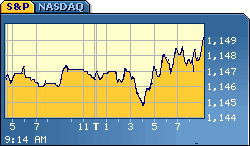The organization that oversees all registered financial institutions in the US came out with it's quarterly report. Third-quarter profits at federally insured banks and thrifts plunged to a four-year low as large institutions set aside billions to cover losses from bad mortgages. The Federal Deposit Insurance Corporation (FDIC) said Profits at the 8,560 FDIC-insured institutions dropped $9.4 billion, or 24.7 percent, to $28.7 billion, hampered by soaring loan defaults and provisions for loan losses. As if the problems in the residential mortgage market would not be enough, we can now add the commercial real estate market on top of it.
"Industry performance was hurt by asset-quality problems and volatility in financial markets during the third quarter. Almost half of all insured institutions reported year-over-year declines in earnings. Residential mortgage loans were the focal point of asset-quality problems. But delinquency and loss rates were up across all major loan categories," said FDIC Chairman Sheila Bair. "Because insured financial institutions entered this period of uncertainty with strong earnings and capital, they are in a better position both to absorb the current stresses and to provide much needed credit as other sources withdraw. Going forward, the outlook for the industry depends on the severity of the housing downturn and the extent to which it spills over into the broader economy."
Chairman Bair also noted that even as banks attempt to address weaknesses in their residential mortgage portfolios, the non-current rate of real estate construction loans increased sharply from its historic lows.
Asset-quality indicators continued to deteriorate. The amount of loans and leases that were noncurrent (90 days or more past due or in nonaccrual status) grew for a sixth consecutive quarter, rising by $16.0 billion (23.8 percent). Loans secured by residential real estate accounted for more than half of the growth. Noncurrent residential mortgage loans increased by $7.5 billion (27.2 percent), and noncurrent home equity lines of credit rose by $783 million (27.4 percent). Noncurrent real estate construction and development loans rose by $3.6 billion (45.5 percent). At the end of September, the amount of loans and leases that were noncurrent totaled $83 billion, the highest level since the third quarter of 1992.
Wednesday, November 28, 2007
FDIC quarterly banking survey
Posted by
Fred
at
2:15 PM
![]()
Subscribe to:
Post Comments (Atom)



No comments:
Post a Comment